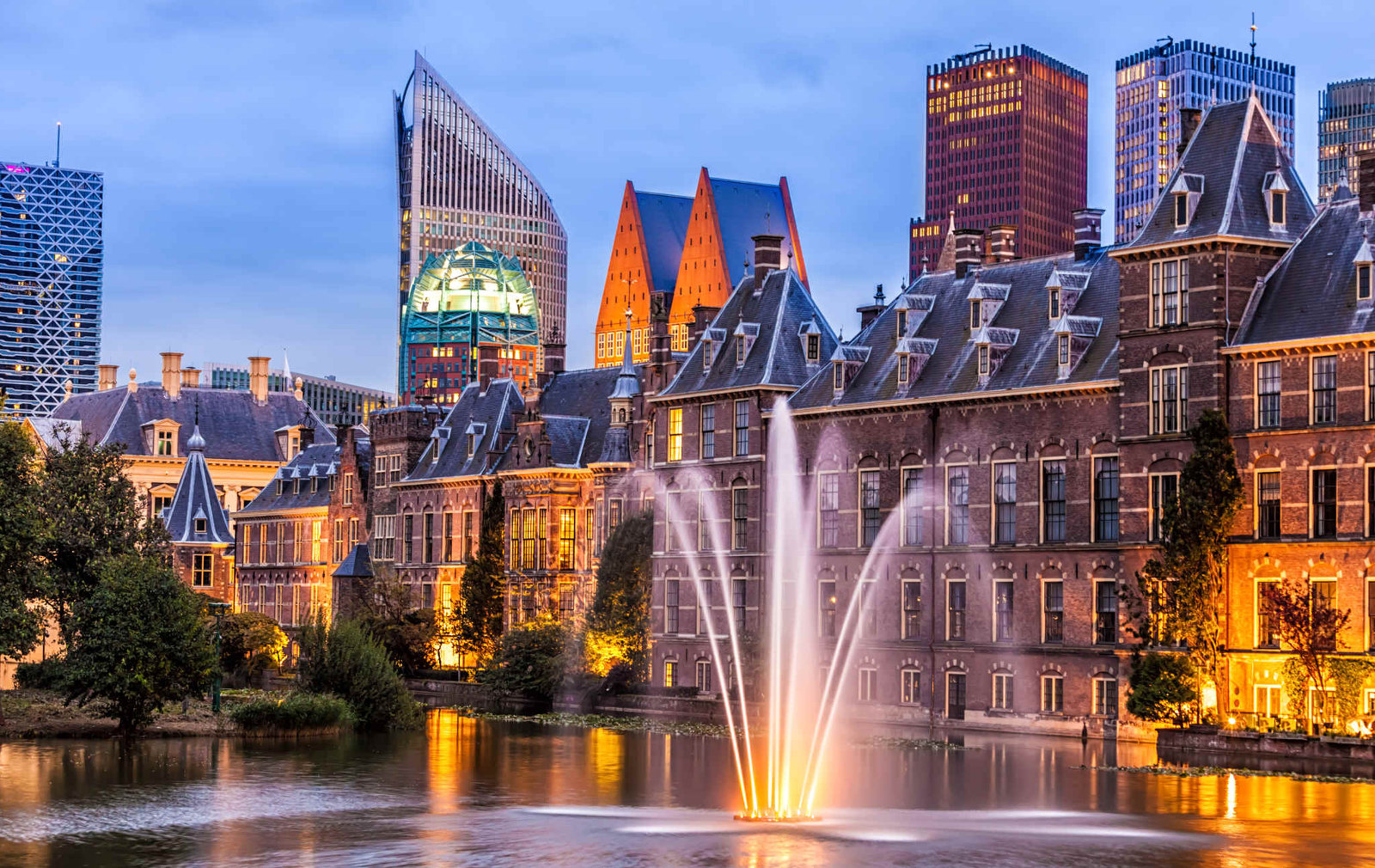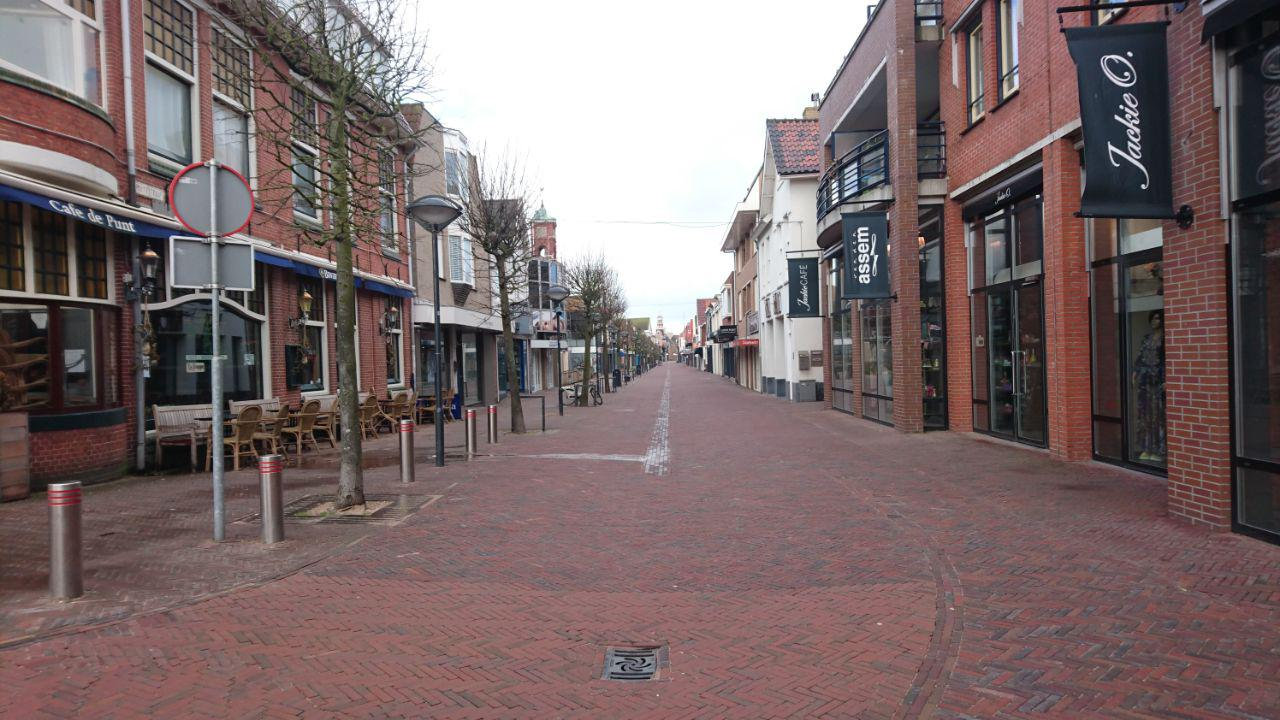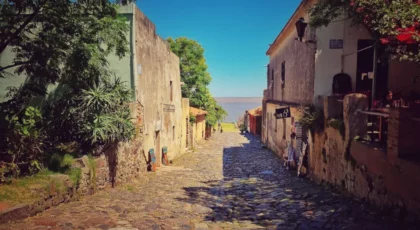From my 4 years living in The Hague, I’ll share what it’s really like in this city full of history, tradition, and a beautiful beach.
First, I’d like to share that what brought me to The Hague was love. Not tourism, nor work—just falling in love and following my wife, who now works abroad.
Since I’m a freelancer, my work wasn’t really affected. I just continued working as usual, taking breaks now and then to explore the city and nearby places.
I’ll start by giving you some general facts about The Hague, then dive into daily life here, and finally, I’ll share a selection of attractions in this beautiful coastal city.
The Hague, administrative capital of The Netherlands
The Hague is a city in the Netherlands, located in the South Holland province. It’s about 65 km west of Amsterdam and around 23 km north of Rotterdam. To give you an idea, a train ride from Amsterdam to The Hague takes about 50 minutes.
The original name of this city in Dutch is Den Haag.
The Hague is the administrative capital of the Netherlands. It’s home to the parliament, the government headquarters, and the royal palace. It’s important to remember that the Netherlands has a constitutional monarchy.
In addition to local institutions and various Dutch ministries, The Hague is also home to numerous international organizations, such as the International Court of Justice and the International Criminal Court. Plus, all the embassies and consulates from around the world are located here.
The canals
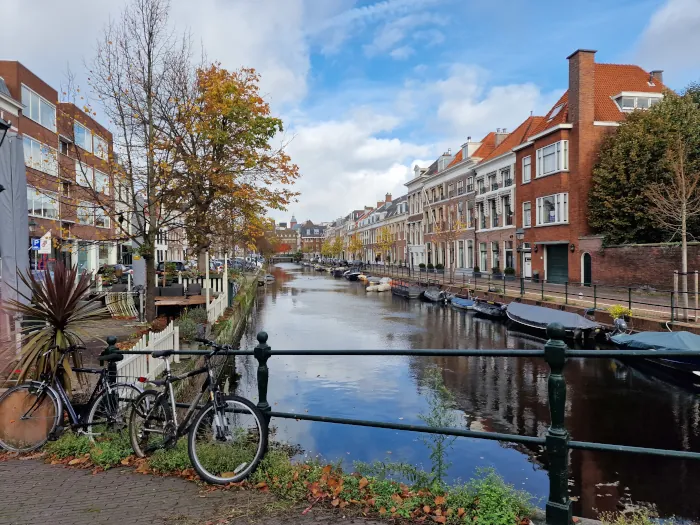
One of the unique features of the Netherlands are the canals. Water sections that divide streets and are crossed by beautiful bridges. There are canals in The Hague, but not as many as in Amsterdam.
The landscape is picturesque, and the architecture blends perfectly with the canals, turning every street in the city into a beautiful postcard.
The weather in The Hague
During my time in The Hague, I’ve experienced the four seasons. The weather is cold and fairly predictable. The average temperature can remain around 7°C for weeks.
During winter, the sky is mostly cloudy almost every day, and there’s usually a light drizzle that doesn’t require an umbrella. Some winter days, it snows, but a snowy landscape is not typical of the city.
One particularity of this city and the Netherlands in general is the wind. Some days it gets so strong that walking down the street becomes difficult. And, of course, it makes the wind chill drop below 0°C.
Inside the houses, the cold is not noticeable because they all come with heating. What they don’t have is air conditioning, as they’re not used to high temperatures.
I was told that a few years ago, there was a heatwave in a European summer, and temperatures rose above 30°C throughout the Netherlands. It was an unusual event that caught everyone off guard.
Daily life in The Hague
Next, I’ll list some important aspects of living in The Hague, without any particular order, that I think are worth highlighting.
Peace and Quiet
The first thing that stands out to me is the peace and tranquility in this city. Even though 500,000 people live here, it doesn’t feel crowded, and it’s common to find deserted streets.
The city center is a bit livelier, but it’s nothing compared to large urban centers like Buenos Aires (where I was born), which I’m more familiar with, or even Amsterdam, Brussels, Rome, and Paris, cities I’ve visited.
Saying The Hague is a village might be too much, but in some areas, it offers a peace similar to that of a small town.
As for safety, during my long stay, I didn’t witness or experience any criminal activity, nor did I see anything unusual or illegal.
I’ve walked alone calmly at night, both in The Hague, Amsterdam, and Rotterdam.
The Dutch Language
The Dutch speak Dutch, a Flemish language that resembles German, has a lot of English influence, and small contributions from French and Spanish.
The good thing is that a large portion of the Dutch are bilingual and can speak English with ease. All you need to do is ask them or simply say “Good morning” and they’ll automatically switch to English. The exception might be older people and those living in rural areas or farther from urban centers.
Unlike the French, who are reluctant to speak English, the Dutch seem to have no problem switching between languages. This makes integration much easier. Of course, they won’t speak English at work, but they will when attending to customers.
As for the Dutch language, it’s not the easiest to learn, but it’s helpful to know some basics when living in the Netherlands. This is especially useful when you’re at the supermarket and need to choose products.
In short, if you’re staying for a limited time, there’s no need to learn Dutch. Knowing English will be enough.
Schedules
The Dutch generally follow the same schedule as most places around the world. They wake up early, and the workday typically runs from 9:00 AM to 5:00 PM.
However, they tend to go to bed quite early. If you go out after 9:00 PM, it’s likely that you won’t run into anyone. You’ll also find few places open, as most close before 10:00 PM.
If you’re planning to go out to eat, you should aim to arrive around 8:00 PM or earlier because after that, it’s considered too late. Of course, there are exceptions, but in general, restaurants and bars close their kitchens early. This is true in The Hague and throughout the Netherlands.
Weekends are like anywhere else in the world. Some people work, but most don’t. Those who aren’t working go out to have fun and relax for a while.
Shopping
When it comes to shopping, there are several things to consider. First, as I mentioned earlier, people working in stores generally know enough English to get by. But there are other important aspects to keep in mind.
Credit Cards
The Dutch don’t use credit cards as much. Instead, everyone has a debit card, which they use for payments in stores and also when shopping online.
The problem I’ve had several times is that my older credit card didn’t have a chip and needed to be swiped through the magnetic strip. The Dutch aren’t familiar with this system, and while the card terminals allow you to swipe it, they tend to be a bit suspicious. Over time, I got an ABN AMRO debit card and everything became easier from that moment on.
When paying, you need to tell the cashier that you’ll be using the PIN. They refer to both credit and debit cards as “PIN cards.”
So, if you’re going to the Netherlands, it’s best to bring a credit card with a chip. While most cards are now issued with chips, some, like the one I had, do not have one. Cards with chips, besides being more secure, often include contactless technology, allowing you to pay by simply holding the card close to the terminal.
Product prices in the Netherlands
Regarding prices, I found that food costs are a bit expensive. For example, a 1.5-liter Pepsi costs €1.65 at Albert Heijn, the most popular supermarket chain in the country.
Speaking of bottles, if you buy the large plastic ones (1 liter or more), you are charged for the container, which costs about €0.25. The good thing is that after using it, you can take it back to the supermarket, put it in a recycling machine, and get your money back as a discount on your next purchase.
What I found excessively expensive is everything related to hygiene and cosmetics. In that category, I found prices that are 100% higher than in Argentina.
Eating out is also quite expensive. A dinner for two people is, on average, around €40 at a regular place without any luxury.
Expiration Dates on Food Products
Food products have very close expiration dates. This is because the food has fewer preservatives. I’ve even bought a loaf of bread that was already moldy the next day.
So, if you’re going to buy food in the Netherlands, it’s a good idea to always check the expiration date on the packaging, more so than you might in other countries.
Delivery service to the door of your apartment.
This point caught my attention, but I understand that people from all over the world are used to it.
The thing is, delivery people expect you to open the building’s entrance door remotely and let them come up. They don’t really understand the concept of “I’ll come down to open the door.”
I know in some places, even in Argentina, it’s common for the delivery person to come up, but in general, for security reasons, people go down to open the door. The thing is, in the Netherlands, delivery people don’t get this idea that someone would come down. What they ask themselves is: “Why would someone want to go down from their apartment to receive something they ordered when they can just have it brought up?”
A Cosmopolitan City
It’s common to walk around The Hague and hear people speaking English, Spanish, Portuguese, Arabic, or any other language. There are many people of foreign origin.
Part of this is because The Hague is home to international organizations, embassies, and consulates, but also because of waves of immigration.
Immigration from Turkey is massive, and this group represents an increasingly important percentage of the population. You can really notice this on the streets and also when you go shopping. It’s common to see mainly Turkish women working at the cash registers. The same goes for deliveries, which are mostly young men of Arab origin.
This makes me think a lot about the level of immigration in the Netherlands. If you speak to these people in English, they understand you. They obviously speak Dutch fluently, and I also assume they speak their native language as well.
The figure of the immigrant who speaks 3 different languages is quite striking in times of extreme xenophobia. From what I’ve seen, the Dutch are open when it comes to immigration. However, as in every place, there are groups that are against immigration.
Transportation in The Hague
Bicycles
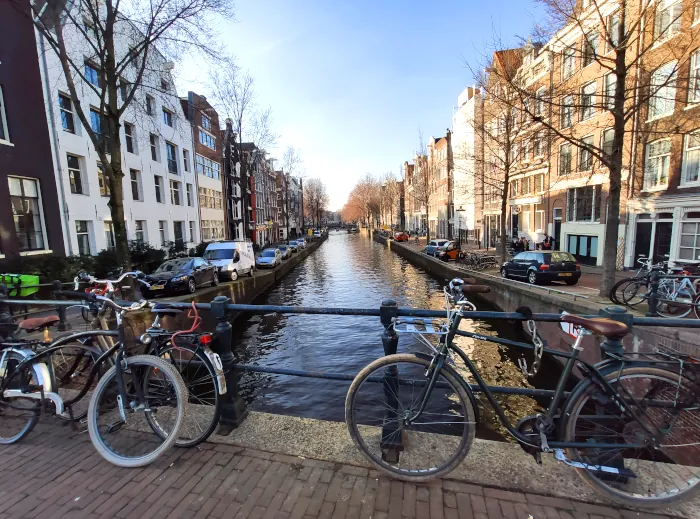
The universal mode of transportation in the Netherlands is the bicycle. There are bikes everywhere, with people coming and going in a chaotic way on them.
It’s important to pay attention when walking through the streets and to spot where the bike lanes are. Even so, it’s crucial to look both ways before crossing a street or a path. Cyclists move quickly and often come from any direction.
One of the details that caught my attention the most is how they not only ride bicycles but also carry their children in special compartments. It’s normal to see mothers and fathers pedaling with two or even three kids in those small carriages that attach to the bikes.
Tram and Bus
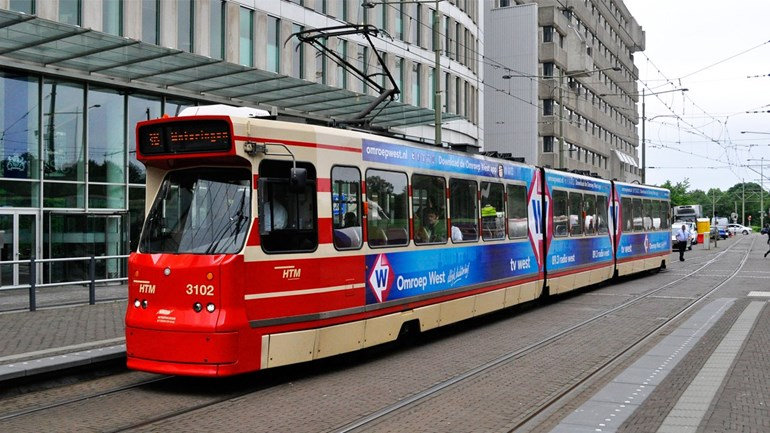
The tram is a streetcar that travels through the city on tracks. It has three or four cars and is an excellent way to get around the city.
Trams and buses are known for being punctual. At each stop, you can see when the next two trams or buses will arrive.
To travel on these modes of transportation, you need your OV-Chipkaart. You can also pay the driver with a card or coins, although it’s not the most recommended option. You’ll also find some machines on the trams to get tickets.
When getting on the tram or bus, you need to check in by tapping your card on the reader. The full price of the trip will be deducted at that point, which covers the entire route. Then, when you get off, you need to check out by tapping your card on another reader. At that moment, an amount corresponding to the station where you get off will be credited. If you get off at the last stop, no amount is credited. The difference between what is deducted at check-in and what is credited at check-out is the fare you pay.
You need to keep in mind that in order to make a trip, you must have enough balance on your OV-Chipkaart to cover the full journey, even if you make fewer stops.
To board the bus, you can signal it to stop, and to get off, there are buttons to notify the driver that you will be getting off at the next stop. From what I’ve seen, it’s considered good manners to greet the driver when you get on. A simple “goede dag” (Good day) is enough.
You can buy the OV-Chipkaart at any station and load money onto it by transferring funds from your bank card.
Trains
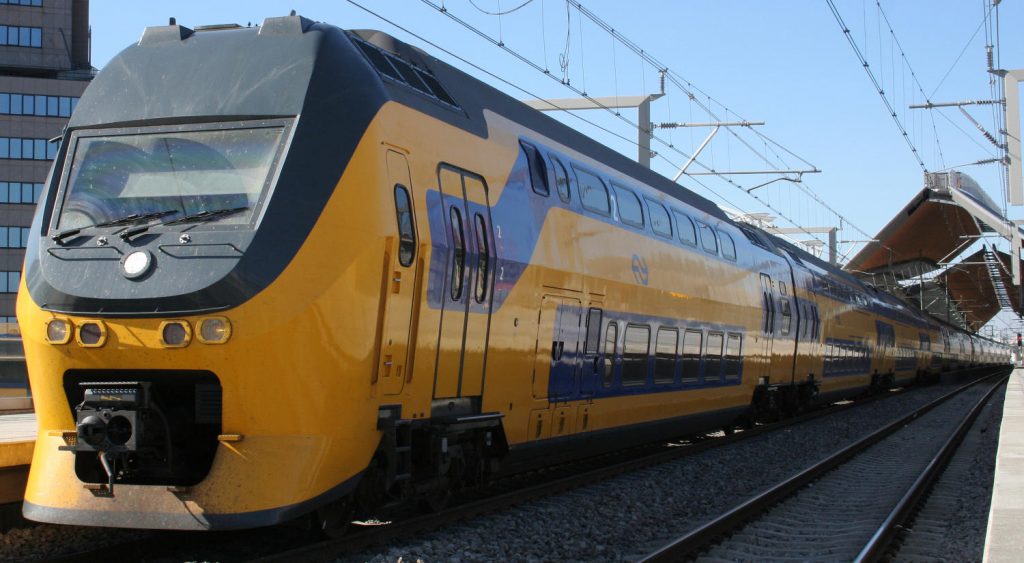
Trains in the Netherlands are used to connect cities. They are usually large, some are double-decker, and they run with the same level of precision, if not more, than buses and trams.
Trains have first and second-class sections. By default, everyone travels in second class. Looking at the first-class sections, I couldn’t tell you why people choose to travel in first class. It seemed to me that there are few differences between the two classes.
The classes of the carriages are clearly marked both on the outside and the inside. First class is marked with a 1, and second class with a 2.
What happens if you buy a second-class ticket and enter a first-class section? Maybe nothing. However, from time to time, a ticket inspector will pass by, ask for your ticket or card, check if you’ve checked in before boarding, and verify that you’re in the correct class. If you’re not, you’ll receive a hefty fine.
Trains have two types of services: intercity and sprinter.
- The intercity connects two or more cities and doesn’t make many stops.
- Sprinter makes many stops to connect different places in two or more cities.
Naturally, the intercity is faster than the sprinter.
On the trains, they check your ticket a lot. The ticket inspector comes by with a device, asks for your OV-Chipkaart, and checks if you’ve bought a ticket and if you’re in the correct class.
Finally, it’s important to note that there are quiet carriages where no talking or noise is allowed. These are properly marked with an “S”.
Attractions to See in The Hague
In The Hague, there are museums, history, and tradition. But there’s also the beach of Scheveningen.
Below, I’ve selected a series of attractions or activities to do in The Hague. I should mention right away that if you’re looking for a city to have fun and go out at night, Amsterdam is a better choice.
Mauritshuis Museum
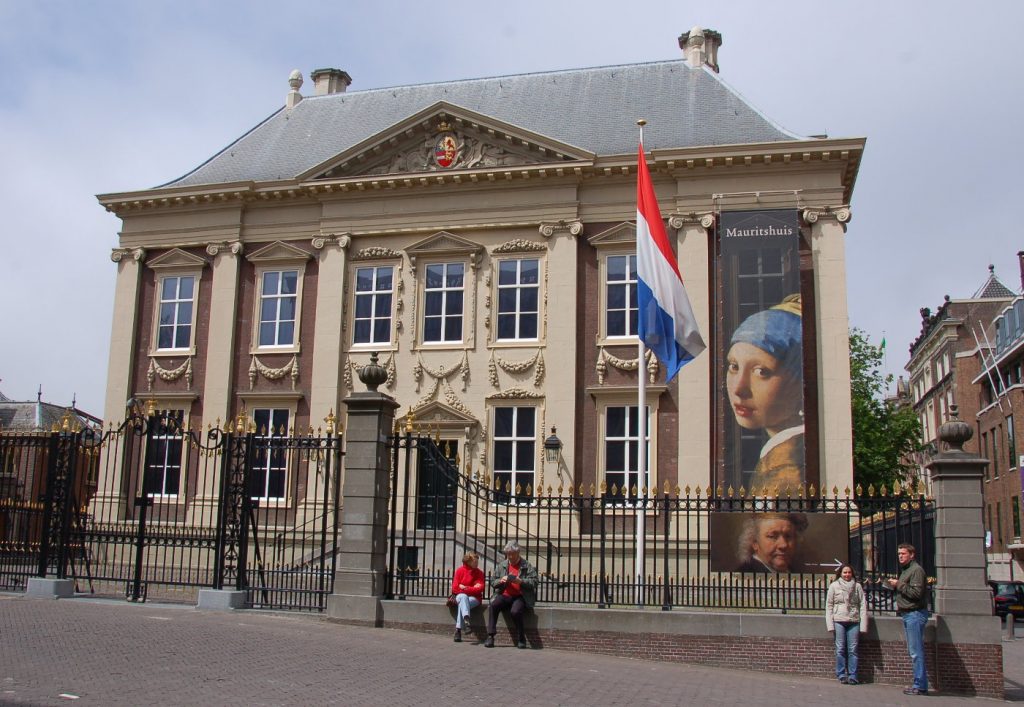
The Mauritshuis Museum is perhaps the main attraction in The Hague. A place that showcases paintings by prominent Dutch artists from the Baroque period. You won’t find any Van Gogh paintings here.
The most notable works are Rembrandt’s self-portrait and his Anatomy Lesson. These two are joined by Johannes Vermeer’s The Girl with a Pearl Earring.
It’s a small and old museum that can be toured in one or two hours.
Escher in Het Paleis
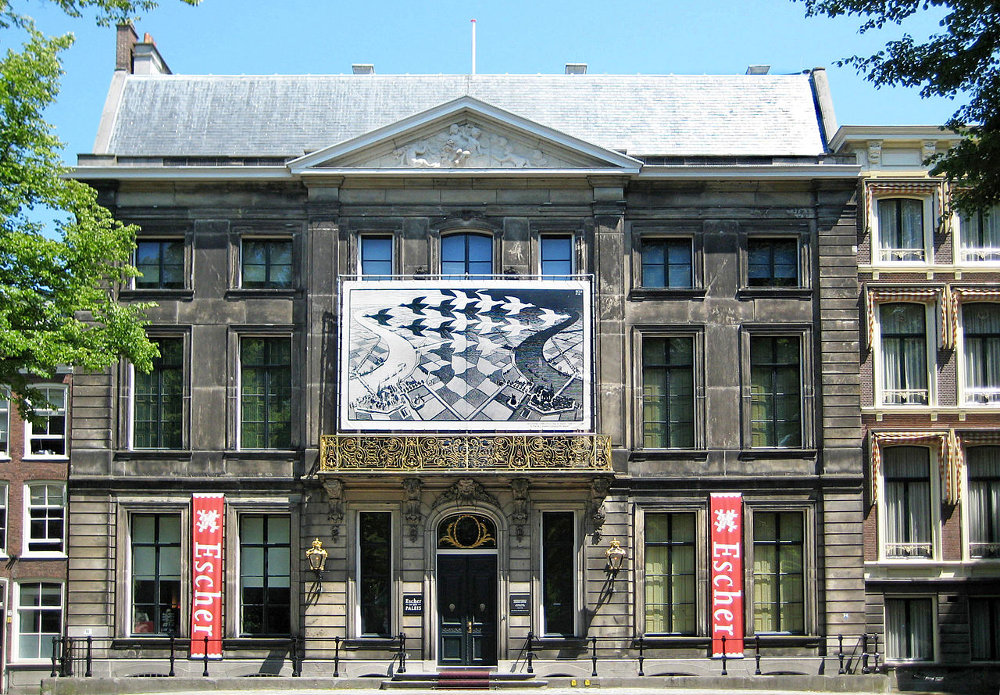
The Escher in Het Paleis museum is the exhibition dedicated to the work of the Dutch artist M. C. Escher, famous for his optical illusions and transformation drawings.
The museum is housed in the Lange Voorhout Palace, on the most beautiful street in The Hague. It displays Escher’s works, but also provides insight into the history of the palace.
On the top floor of the museum, there are interactive activities with technology, all related to Escher’s work. These may be of interest to younger visitors.
Sure! Here’s the translation:
Binnenhof
The Binnenhof consists of several buildings where the parliament operates and where the government house of the Netherlands is located.
It offers a spectacular view due to its architecture and surroundings. There is a canal with ducks, geese, and other animal species. There are water fountains, and the flags of all the Dutch provinces are displayed.
The best part of the Binnenhof is that it has a pedestrian passage that crosses through it. This leads to a large open courtyard where you can better appreciate the architecture of the place from the inside.
Royal Palace and Surrounding Gardens
The Royal Palace is huge and occupies much of a city block. Additionally, it connects to parks and gardens. Some of them are open to the public.
The recommended one to visit is the Paleistuin. A small, well-maintained park where you’ll find various bird species and some playgrounds for children. A peaceful place to visit with family.
Scheveningen
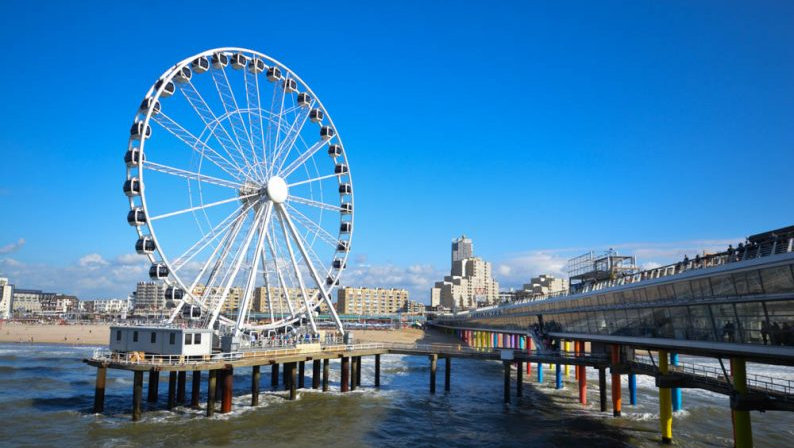
Scheveningen beach is one of the main attractions in The Hague. It has an extensive pier with restaurants and places to get food. It’s just 15 minutes from downtown The Hague by tram.
In winter, it seemed like a family-friendly place, but in the summer, it attracts a younger crowd. It’s full of beach bars and pubs, and in the summer, these places are packed with people.
This beach also has a lot of history. It was once a humble area with fishing boats before becoming a touristy summer resort.
Panorama Mesdag
Continuing with Scheveningen beach, we have the Panorama Mesdag. It’s a 360° mural painting created by Hendrik Willem Mesdag that illustrates the landscape of Scheveningen in 1881.
The artwork is 14 meters high and 120 meters in circumference. It’s truly breathtaking to be there and see it. It is housed in the museum of the same name, and while there are some other works by the artist, especially marine paintings, the Panorama is the main attraction.
The museum is not located in Scheveningen but in downtown The Hague.
Madurodam
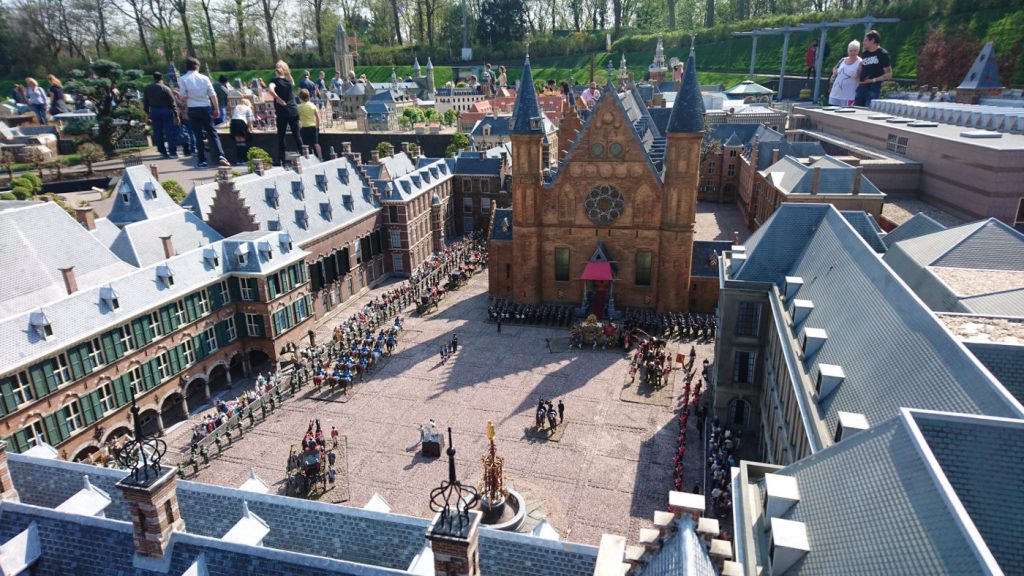
Madurodam is a miniature park that features large and impressive models of the main buildings and structures across the Netherlands.
In Madurodam, you’ll find a model of the Binnenhof, another of Schiphol Airport, and even one of Amsterdam’s Red Light District, along with others of palaces, stations, churches, and even a stadium.
Each of these models has an amazing level of detail and is perfectly constructed to emulate the real structure. Additionally, each model provides information about what it is and where it is located in the Netherlands.
It’s a great place to visit with kids, take lots of photos, and spend an entire afternoon.
Sure! Here’s the translation:
Louwman Museum
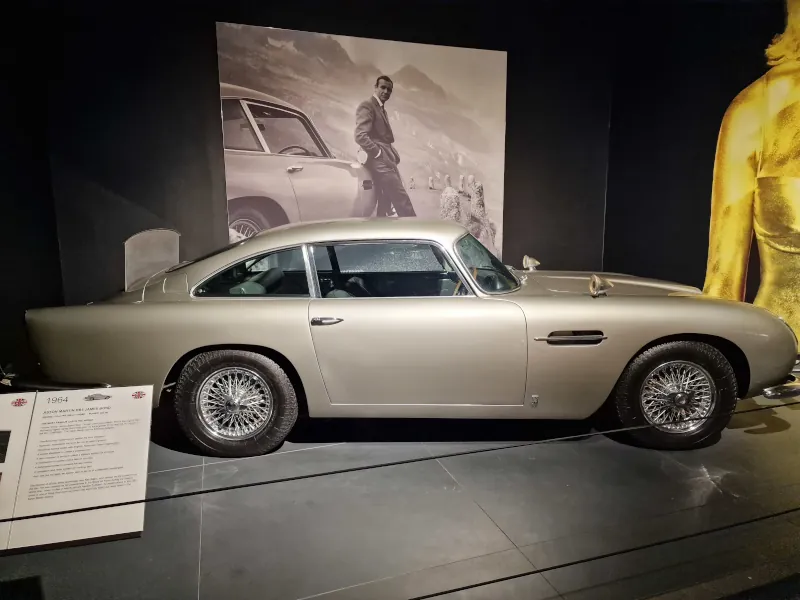
If you love cars, you must visit the Louwman Museum, dedicated to the history of this vehicle. It is undoubtedly one of the best museums I’ve visited in Europe. The collection includes 275 cars (and some motorcycles).
Additionally, it tells the story and evolution of the automobile through well-preserved historic models. As if that weren’t enough, there is an exclusive section dedicated to motorsports, with incredible paintings.
Do you have any questions about living in The Hague?
Below the post, you’ll find the comment box. Feel free to ask me anything about living in The Hague or comment on whatever you’d like. Despite I don’t live in The Hague anymore, I’ll do my best to answer your questions.
Find more content about programming and the freelancer lifestyle
I hope you found this article interesting.
If you’re looking for hosting, I recommend Digital Ocean. Follow this link to get $200 in credit to use over a 60-day period.
I invite you to follow me on social media: YouTube, LinkedIn, X, GitHub, and Instagram. I’m also on CodeWars.
That’s all. Thank you very much for taking the time to read.
See you next time!
